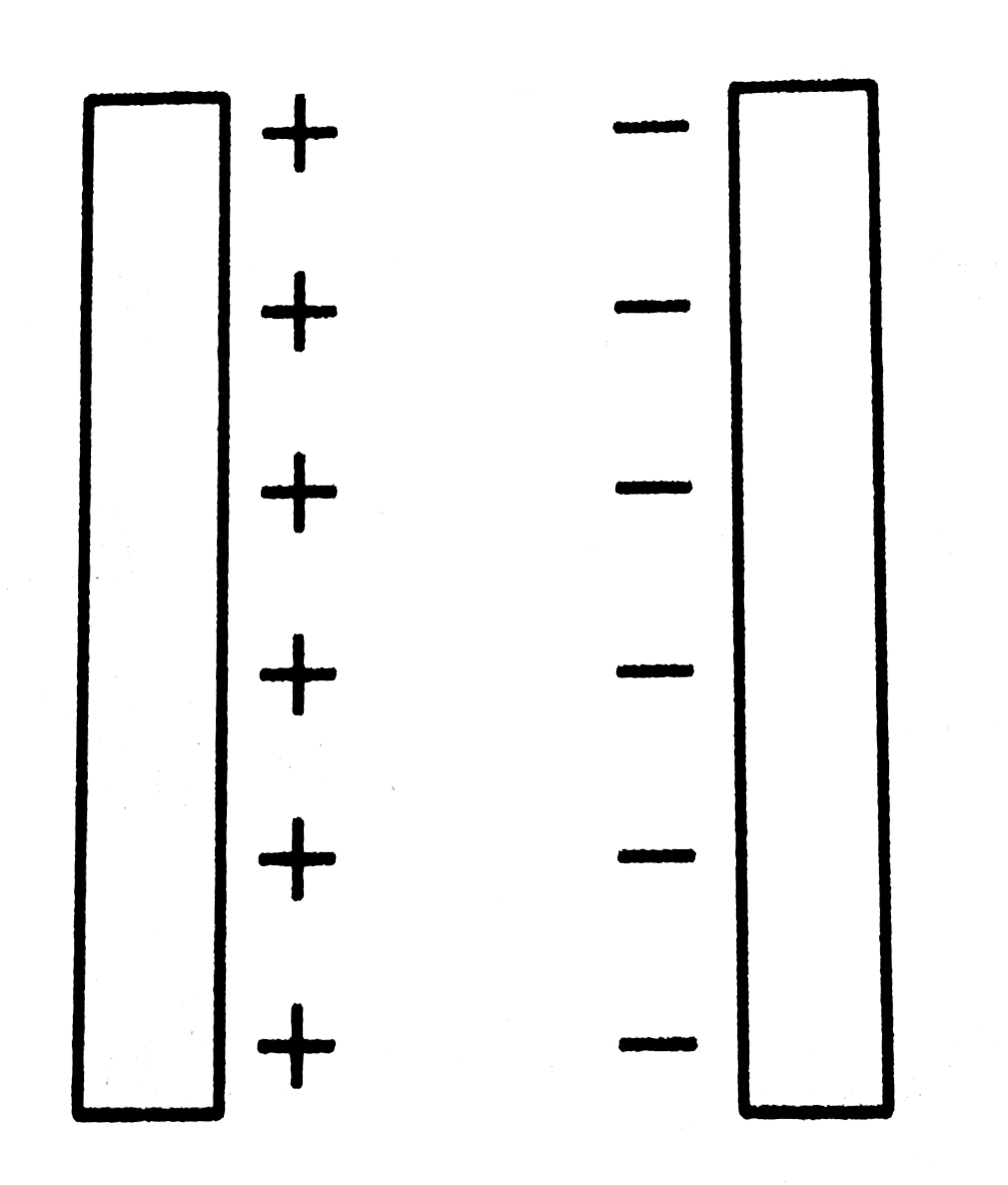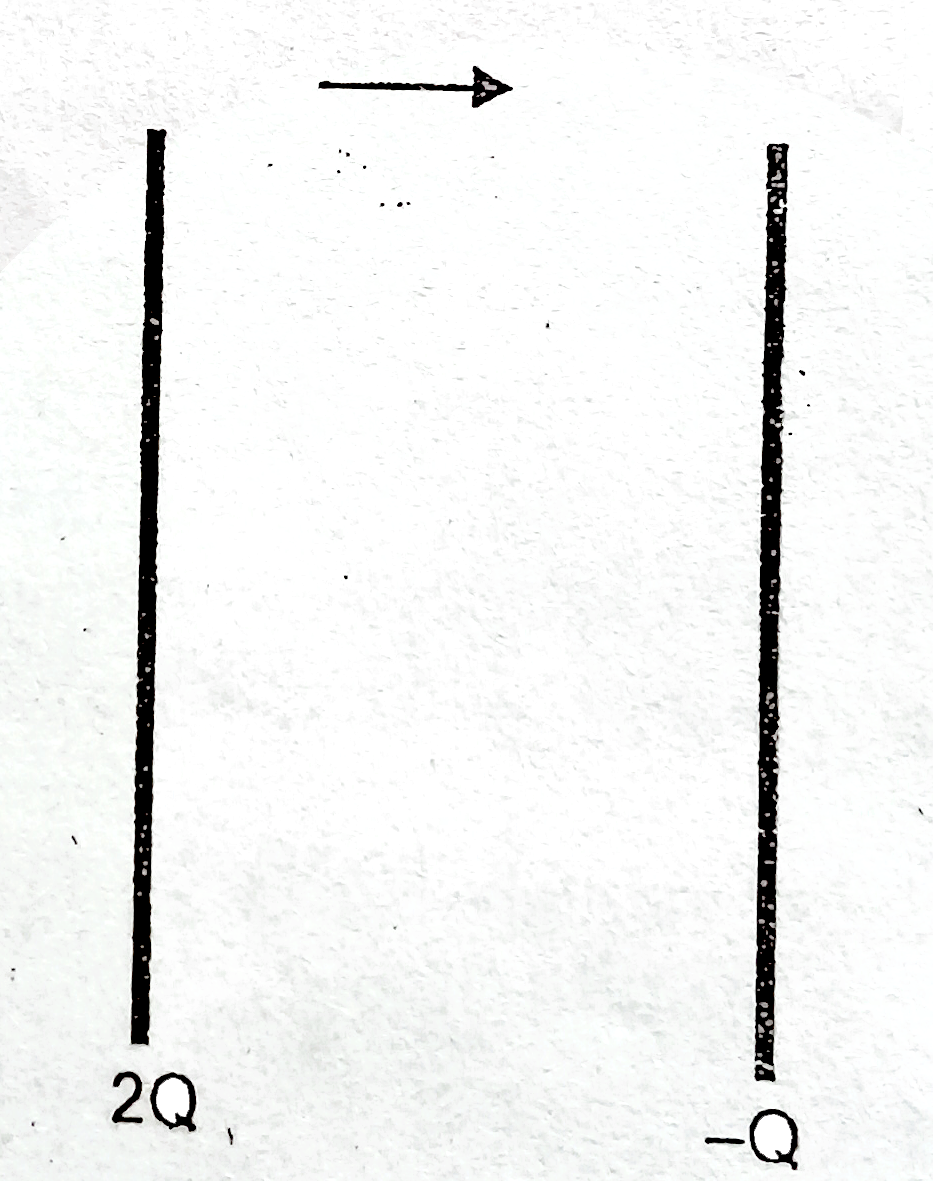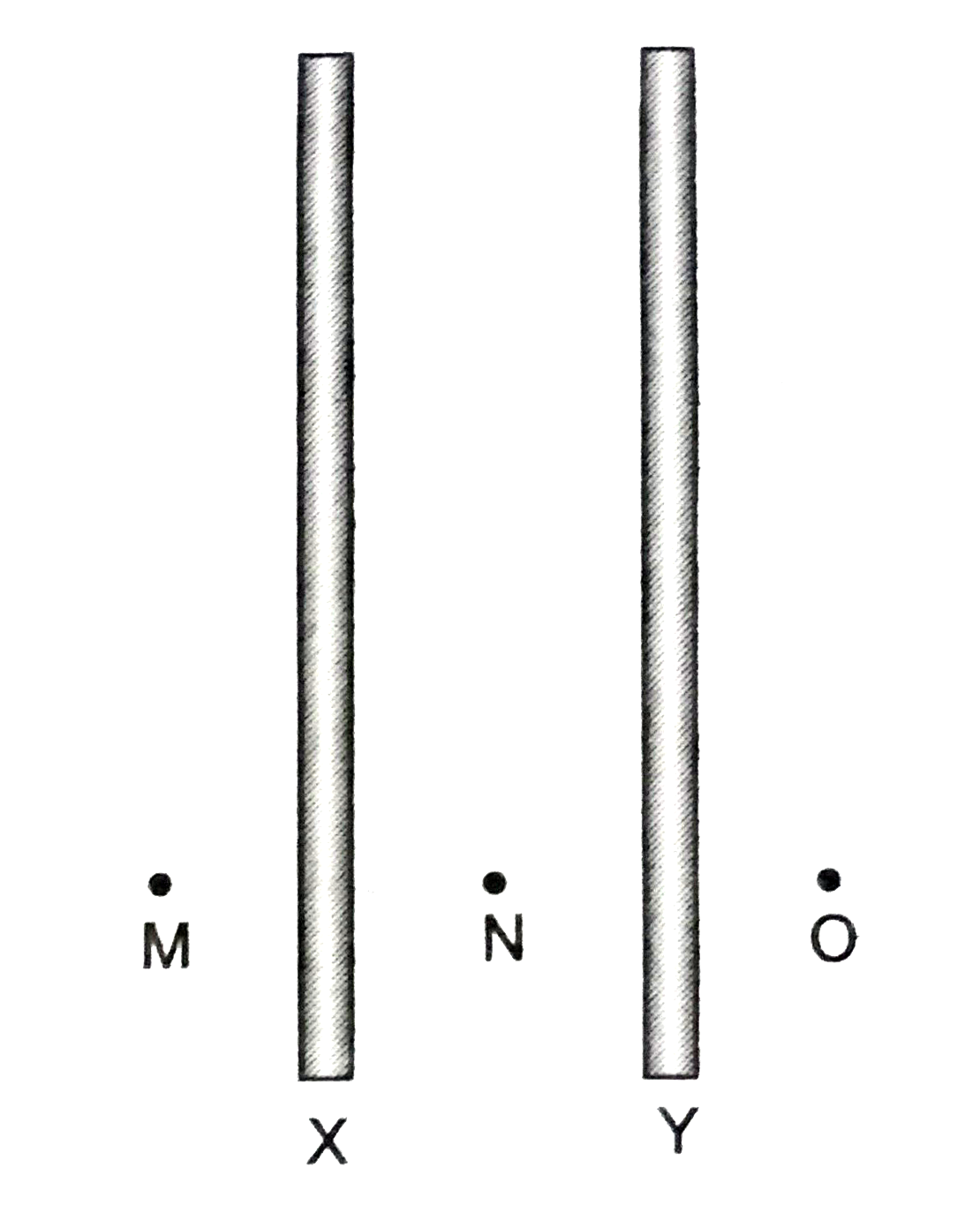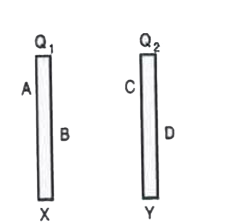Two large conducting plates X and Y. each having large surface area A (on one side), are placed parallel to each other as shown in figure (30-E7). The plate X is given a charge Q whereas the other is neutral. Find (a) the surface charge density at the inner surface of the plates X, (b) the electric field at a point to the left of the plates, (c) the electric field at a point in between the plates and (d) the electric field at a point to the right of the plates.
 Solution in Tamil
Solution in Tamil
(a) For the surface charge density of a
single plate. Let the surface charge density
at both side be σ1andσ2.
Now electric field at both ends
=σ12eplison0andσ22eplison0
Due to net balanced electric field on plate
and r1equal→r2
q1=q2=Q2
Net surface charge density = Q2A
(b) Electricfield to the left of the plates
Since r=Q2A .
Hence, electric field = Q2A(ε0)
This must be directed towards left as 'X' is
the charge plate.
(c) and(d) here in both the cases the
charged plate 'X' acts as the only source of
electric field, with +ve in the inner side
and'Y' attracts towards it with -ve in its
innerside. So, for the middle portion
E is towards right.
(d) Similarly for extreme right the outer
side of the 'Y' plate acts as +ve and hence
it repels to the right with E = Q2Aε0.
Topper's Solved these Questions
Similar Questions
Mark the correct option:
05:16View SolutionShow that the dimensions of the displacement current (ε0dΦEdt) are that of an electric current.
View SolutionA concave mirror having a radius of curvature 40 cm is placed in front of an illuminated point source at a distance of 30 cm from it. Find the location of the image.
02:15View SolutionTwo large conducting plates are placed parallel to each other nad they carry equal and opposite charges with surface density σ as shown in figure (30-E6). Find the electric field (a) at the left of the plates, (b) in between the plates and © at the right of the plates.
 03:37View Solution
03:37View SolutionTwo conducting plates M and N, each having large surface area A (on one side), are placed parallel to each other in figure. The plate M is given charge Q_1 and N, charge Q_2(ltQ_1) . Then
03:13View SolutionTwo large parallel conducting plates are placed close to each other ,the inner surface of the two plates have surface charge densities +sigma and -sigma .The outer surfaces are without charge.The electric field has a magnitude of
01:31View Solution
Two large parallel conducting plates of net charge 2Q and −Q are placed in a uniform external electric field Q2Aε0 prependicular to plates as shown. The surface area of each plates is A. The charge on the left surface of the left plate and right surface of the right plate are respectively.05:04View SolutionThree large plates A, B and C are placed parallel to each other and charges are given as shown. The charge that appears on the left surface of plate B is
View SolutionTwo large, thin plates are parallel and close to each other. On their inner faces, the plates have surface charge densities of opposite signs and of magnitude 16xx10^(-22)C m^(-2) . The electric field between the plates is
View Solutionचित्र में प्रदर्शित दो सुचालक प्लेटों को एक - दूसरे के समांतर रखा गया है | प्लेटों के प्रत्येक पृष्ठ का क्षेत्रफल A है और प्लेट X को Q आवेश दिया गया है जबकि प्लेट Y उदासीन (neutral ) है | निम्नांकित के मान ज्ञात करे |
(a) प्लेट X की भीतरी सतह पर आवेश का पृष्ठ -घनत्व |
(b) M,N तथा O बिंदुओं पर निकाय में आवेश वितरण के कारण विद्युत -क्षेत्र |
 04:00View Solution
04:00View SolutionEach of two large conducting parallel plates has one sided surface area A. If one of the plates is given a charge Q whereas the other is neutral, then the electric field at a point in between the plates is given by
03:29View SolutionTwo large, parallel conducting plates X and Y , close to each other, are given charges Q1andQ2(Q1>Q−(2)) . The four surfaces of the plates are A, b, C and D, as shown
 02:10View Solution
02:10View SolutionTwo large conducting plates are placed parallel to each other nad they carry equal and opposite charges with surface density σ as shown in figure (30-E6). Find the electric field (a) at the left of the plates, (b) in between the plates and © at the right of the plates.
 02:25View Solution
02:25View SolutionTwo conducting plates X and Y, each having large surface aera A (on one side), are placed parallel to each other as show in figure.

Find the surface charge density at the inner surface of the plate X.View SolutionTwo large, thin plates are parallel and close to each other. On their inner faces, the plates have surface charge densities of opposite signs and of magnitude 16xx10^(-22)C m^(-2) . The electric field between the plates is
08:03View SolutionTwo large parallel conducting plates are placed close to each other ,the inner surface of the two plates have surface charge densities +σ and −σ .The outer surfaces are without charge.The electric field has a magnitude of
01:33View Solution

